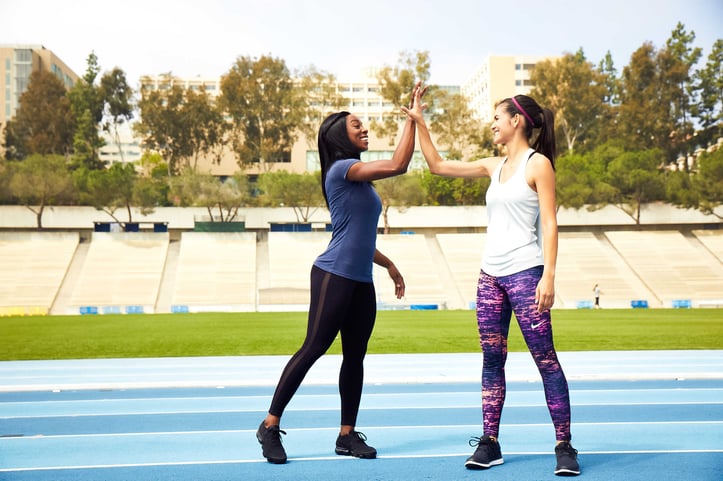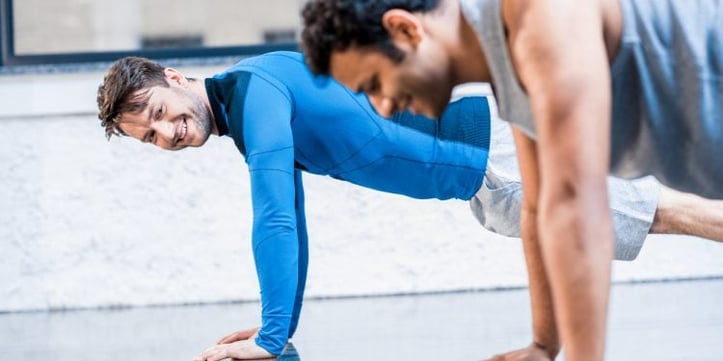
6 Athlete-Tested Training Moves to Dominate Your Sport (2024 Edition)
Whether you're a dynamic basketball guard aiming for a quicker first step, a tenacious soccer midfielder covering every inch of the pitch, or a dedicated weekend warrior striving for your personal best, peak athletic performance hinges on one powerful principle: specificity. The most effective training moves are those that directly mimic the unique demands of your sport—supercharging your power, enhancing your stability, or building the precise endurance you need when it matters most.
Below, we break down 6 evidence-based, game-changing exercises. Backed by sports science and trusted by pro coaches, these moves are designed to help you not just play your sport, but truly dominate it. Let's get ready to elevate your game!
1. Medicine Ball Slam: Unleash Your Inner Explosive Power
- Why it works for athletes: The stretch-shorten cycle (SSC) – where your muscles rapidly lengthen then powerfully contract – is the secret sauce behind explosive movements in sports like volleyball (think a powerful spike), football (a decisive tackle), or even a sudden burst of speed in track. A 2022 study in the Journal of Strength and Conditioning Research found that incorporating medicine ball slams can improve an athlete's SSC efficiency by an impressive 18%.
- How to do it (Master the Slam):
- Stand tall with your feet shoulder-width apart, holding a 6-10lb medicine ball (choose a weight you can control with power) overhead.
- Engage your core, hinge slightly at your hips, and then explosively drive the ball downward into the floor directly in front of you, using your entire body.
- Maintain control as you catch the ball on the rebound (or pick it up safely).
- Pro Tip for Peak Performance & Safety: Avoid rounding your lower back during the downward motion. Keep your spine neutral and engage your core to protect your lumbar region and maximize power transfer.
- Best for: Athletes in sports requiring sudden, powerful bursts – basketball players, tennis players (for powerful serves), track and field throwers, and combat sports athletes.
2. Single-Leg Romanian Deadlift (RDL): Build Unshakeable Balance & Injury Resilience
- Why it works for athletes: Most sports are played predominantly on one leg at a time – think of a soccer player cutting, a hockey player pivoting, or a runner striding. NASM-certified trainer Mark Verstegen highlights that single-leg RDLs activate the glutes, hamstrings, and core stabilizers up to 30% more effectively than traditional bilateral (two-legged) lifts. This enhanced activation is crucial for improving balance, proprioception (your body's awareness in space), and significantly reducing the risk of common knee injuries.
- How to do it (Find Your Balance):
- Stand on one leg, holding a dumbbell or kettlebell in the opposite hand (or one in each hand for more challenge).
- Keeping a slight bend in your standing (working) leg, hinge forward at your hips, lowering the weight towards the floor.
- Keep your chest up, your back flat, and extend your non-working leg straight behind you for balance, aiming to get your torso parallel to the ground.
- Squeeze your glutes and hamstrings on the standing leg to return to the upright starting position with control.
- Common Mistake to Avoid: Letting the non-working leg swing wildly or allowing your hips to rotate open. Focus on keeping your hips square to the ground and the movement controlled.
- Best for: Runners, soccer players, basketball players, dancers, and any athlete needing exceptional balance, hip stability, and lateral agility.
3. Kettlebell Swing: Fuel Your “Hip Hinge” for Game-Changing Speed and Power
- Why it works for athletes: The hip hinge – the ability to powerfully extend your hips – is the foundational movement pattern for sprinting, jumping, throwing, and many other athletic actions. A 2020 ACE study compellingly linked consistent kettlebell swing training to a 22% increase in hip extension power, which directly correlated to faster 40-yard dash times among participants.
- How to do it (Harness the Hinge):
- Stand with your feet shoulder-width apart, with the kettlebell positioned on the floor slightly in front of you.
- Hinge at your hips (push your glutes back, keeping a slight bend in your knees and a flat back) and grip the kettlebell with both hands.
- Hike the kettlebell back between your legs, then explosively drive through your heels and thrust your hips forward, squeezing your glutes, to propel the kettlebell up to shoulder or chest height.
- Let the kettlebell's momentum guide it on the downswing as you hinge back at the hips. Remember, the power comes from your hips, not your arms!
- Pro Tip for Maximum Power: Breathe in deeply on the backswing, and exhale forcefully (a "power breath") at the top of the swing as you squeeze your glutes and brace your core.
- Best for: Sprinters, football players (especially linebackers and running backs), tennis players (for powerful groundstrokes and serves involving hip rotation), and any athlete looking to improve explosive power from the hips.
4. Battle Ropes “Wave” Drill: Build Unrelenting Upper-Body Endurance & Core Stability
- Why it works for athletes: Many sports, like rowing, swimming, lacrosse, or combat sports, demand sustained, powerful effort from the upper body and core. A 2019 NIH study found that battle rope training not only torches calories but also improves shoulder stability and heart rate variability (a key marker of cardiovascular endurance and recovery) more effectively than some forms of traditional cardio.
- How to do it (Make Some Waves):
- Grip both rope handles firmly, one in each hand, and stand with your feet shoulder-width apart, knees slightly bent in an athletic stance.
- Alternate raising and lowering each arm rapidly to create large, fluid waves that travel down the length of the ropes.
- Keep your core braced tightly throughout the movement – avoid excessive arching or rounding of your lower back.
- Common Mistake to Avoid: Relying solely on your arms. Engage your lats, shoulders, core, and even your glutes to generate power and maintain stability. Think of it as a full-body effort.
- Best for: Swimmers, rowers, baseball pitchers, wrestlers, and any athlete needing robust upper-body endurance and core strength.
5. Bear Crawl: Master Multi-Plane Coordination & Primal Strength
- Why it works for athletes: Sports are rarely played in a straight line. They involve constant twisting, sidestepping, changing direction, and reacting in multiple planes of motion. The bear crawl (moving on hands and knees, keeping your back flat and hips low) brilliantly activates over 20 core muscles, according to a 2021 Journal of Athletic Training study. It effectively mimics the dynamic, real-game movement patterns many athletes encounter.
- How to do it (Move Like an Athlete):
- Start on your hands and knees, with your wrists directly under your shoulders and your knees directly under your hips. Lift your knees just an inch or two off the ground.
- Move forward by stepping your right hand and left foot forward simultaneously, then your left hand and right foot. Keep your hips low, your core tight, and your back flat.
- Try moving backward, sideways (lateral bear crawls), or even in circles for an added challenge to your coordination and core control.
- Pro Tip for Core Engagement: Go slow and controlled. Speed isn't the goal here; maximizing core engagement and maintaining proper form is key. Imagine balancing a glass of water on your lower back.
- Best for: Rugby players, basketball players, martial artists, wrestlers, and any athlete needing exceptional core strength, coordination, and the ability to move efficiently in multiple directions.
6. Box Jump: Skyrocket Your Vertical Power & Explosiveness
- Why it works for athletes: The ability to rapidly transition from an eccentric (landing or loading) phase to a concentric (jumping or exploding) phase is critical for actions like dunking a basketball, blocking a volleyball, or exploding off the starting blocks. A 2018 study published in Sports Medicine found that incorporating box jumps into a training program can increase vertical leap by an average of 9% in just 8 weeks when combined with appropriate strength training.
- How to do it (Reach New Heights):
- Stand facing a sturdy box, about 2-3 feet away, with your feet hip-width apart and arms at your sides.
- Dip into a shallow quarter squat, swinging your arms back behind you to load up.
- Explode upward powerfully, swinging your arms forward and up, and drive through your legs to jump onto the box.
- Aim to land softly and quietly on the center of the box with your knees slightly bent, absorbing the impact. Step down carefully (don't jump down, especially for beginners).
- Safety First, Always: Start with a low box (e.g., 12-18 inches) to master the form and build confidence before gradually increasing the height. Ensure the box is stable and won't tip.
- Best for: Basketball players, volleyball players, track and field jumpers (long jump, high jump), and any athlete looking to improve their vertical leap and explosive power.
Your Next Move: Train Like a Pro, Perform Like a Champion
These powerful moves aren’t a one-size-fits-all prescription. The smartest approach is to strategically incorporate 2-3 of these exercises into your weekly training routine, focusing on movements that directly address the demands and potential weaknesses of your specific sport. For example, a soccer player might benefit immensely from pairing single-leg RDLs (for balance and hamstring strength) with bear crawls (for multi-directional coordination and core stability).
And always remember: recovery is just as vital as the training itself. Prioritize 7-9 hours of quality sleep each night and schedule 1-2 active recovery or complete rest days weekly to allow your muscles to repair, rebuild, and adapt.
Ready to elevate your game and truly dominate your sport? Grab your gear, pick 1-2 of these moves to focus on this week, and approach your next workout with purpose and intensity. Your sport is waiting—let’s work together to make this your best season yet! You've got this!

Fit vs Fat: Decoding Health's True Ruler

Pump Up Your Heart: Science-Driven Weight Loss

Wellness Technology: Your Path to Sustainable Weight Loss

A Sensible Guide to Dietary New Year's Resolutions
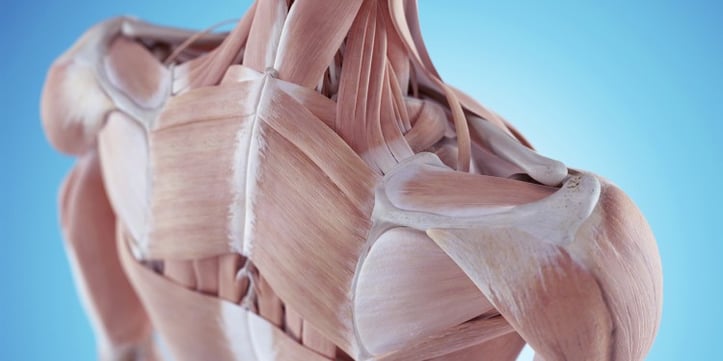
Prevent Shoulder and Rotator Cuff Injuries with Corrective Exercises
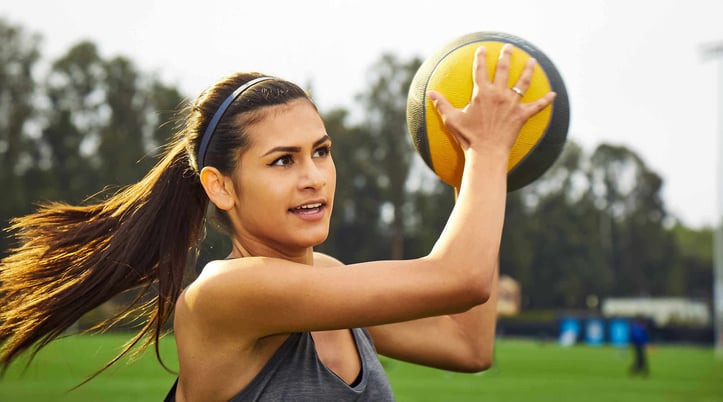
Overcome Fitness Plateaus: 4 Tips for Success
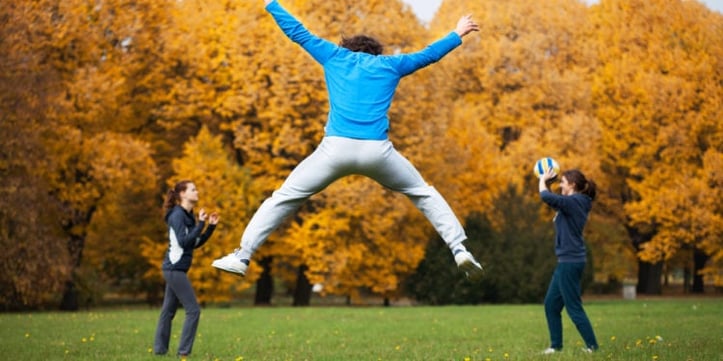
10 x 10 Thanksgiving Day Circuit: A Fitness Guide
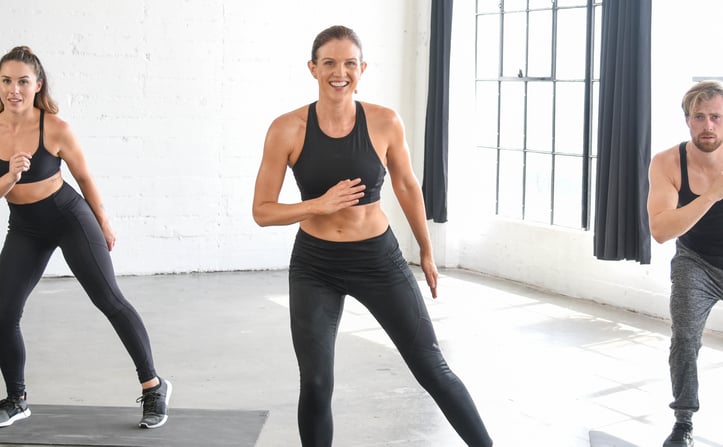
Unleash Your Fitness Potential with Kit Rich's Training Secrets

The Future of Fitness: A Guide for Beginners to Intermediates
